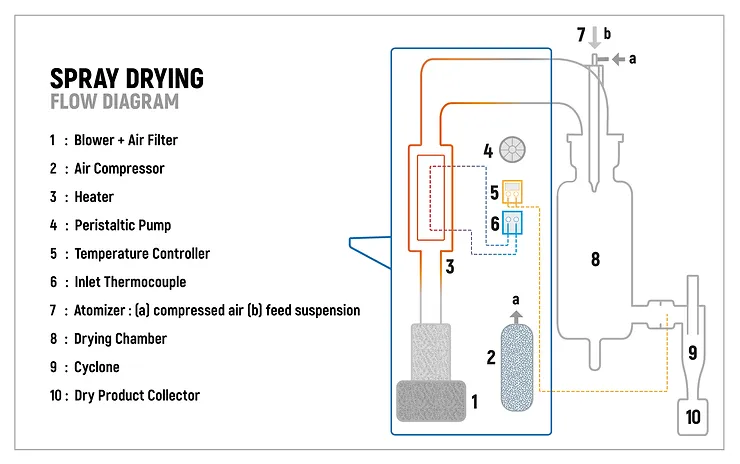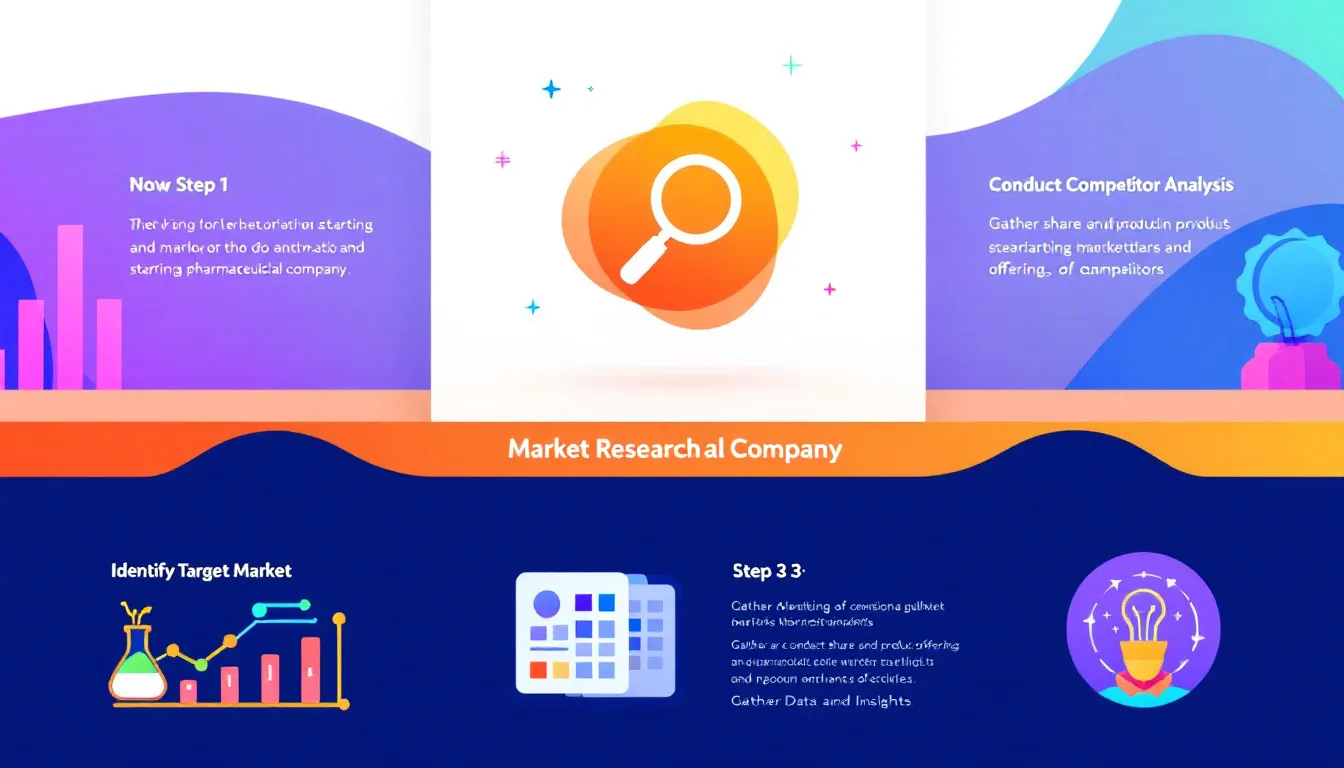En la industria farmacéutica, dos métodos comunes para secar productos son la liofilización y el secado por aspersión. Estos métodos eliminan el agua de productos como medicamentos y vacunas, lo que hace que duren más y sean más fáciles de almacenar.
Pero, ¿cómo funcionan? ¿Y cuál es mejor para los distintos tipos de productos?
Exploremos las diferencias entre la liofilización y el secado por aspersión, analizando los pros y los contras de cada proceso.

¿Buscas una máquina de liofilización?
¿Qué es la liofilización? La liofilización es un método popular en la industria farmacéutica. Ayuda a conservar productos sensibles eliminando el agua y manteniendo el producto intacto. Este método se utiliza para muchos medicamentos y vacunas importantes.

La liofilización es excelente para preservar la calidad del producto, ya que conserva la estructura, el sabor y los nutrientes originales, lo que la hace perfecta para productos como las vacunas, que deben conservar su eficacia durante períodos prolongados.
La liofilización se utiliza para vacunas, proteínas y otros productos biológicos. También se utiliza en la industria alimentaria para conservar frutas, verduras y carnes sin perder su sabor.
Una de las mejores ventajas de la liofilización es que ayuda a mantener la estabilidad. Como se elimina la mayor parte de la humedad, el producto se puede conservar durante mucho tiempo sin refrigeración. Esto es importante para los medicamentos que deben mantenerse seguros y eficaces.
La liofilización lleva tiempo. Es un proceso más lento en comparación con el secado por aspersión, lo que puede hacerlo menos adecuado para producir grandes cantidades de producto rápidamente. Sin embargo, sigue siendo la opción preferida cuando el producto debe permanecer estable y mantener su calidad.
La liofilización puede ser costosa. El equipo es costoso y requiere más tiempo y energía para completarse. Esto significa que puede no ser la mejor opción si necesita producir una gran cantidad de productos rápidamente o con un presupuesto ajustado.
La liofilización es lenta. Primero se congela el producto y luego se le quita el agua durante un largo período. Esto hace que sea más difícil aumentar la producción en comparación con métodos más rápidos como el secado por aspersión.
Los productos liofilizados suelen presentarse en forma sólida, como en polvo. Una vez secados, el producto se puede reconstituir añadiéndole líquido. Esto resulta útil para las vacunas y los medicamentos que deben mezclarse antes de su uso.
¿Qué es el secado por aspersión? El secado por aspersión es otro método de secado que se utiliza en la industria farmacéutica. Funciona rociando un producto líquido en una cámara de aire caliente, donde el agua se evapora rápidamente y deja un polvo seco.

El secado por aspersión es más rápido que el secado por congelación. Puede procesar un mayor volumen de productos a la vez. Esto lo convierte en una buena opción cuando la velocidad es importante o cuando se necesita producir grandes cantidades.
El secado por aspersión se utiliza a menudo para elaborar polvos para inhaladores, cápsulas y comprimidos. También se utiliza en la industria alimentaria para elaborar leche en polvo, café y otros productos.
El secado por aspersión es bueno para muchos productos, pero no conserva el producto tan bien como la liofilización. Algunos productos delicados, como las proteínas, pueden perder su eficacia cuando se secan por aspersión. Sin embargo, para muchos productos a granel, el secado por aspersión funciona muy bien para mantenerlos estables.
El secado por aspersión es mucho más rápido que el secado por congelación. Puede procesar grandes cantidades de producto a la vez, lo que lo hace mejor para la producción a gran escala. El secado por aspersión es ideal cuando se necesita producir una gran cantidad de productos de manera rápida y eficiente.
El secado por aspersión es menos costoso que la liofilización. El equipo es más sencillo y el proceso es más rápido, por lo que cuesta menos operarlo. Esto hace que el secado por aspersión sea una buena opción para productos que no necesitan el alto nivel de conservación que proporciona la liofilización.
El secado por aspersión es rápido. El producto líquido se rocía en aire caliente y el agua se evapora rápidamente. Esto hace que el secado por aspersión sea una opción ideal para ciclos de producción rápidos.
Los productos secados por aspersión suelen presentarse en forma de polvos finos. Estos polvos se pueden utilizar para elaborar comprimidos, cápsulas u otras formas de medicamentos. A diferencia de la liofilización, el secado por aspersión no suele requerir la reconstitución con líquido.
| Factor | Liofilización | Secado por aspersión |
| Beneficios clave | Conserva la calidad del producto, ideal para artículos sensibles. | Más rápido y rentable para la producción en masa |
| Aplicaciones típicas | Vacunas, proteínas, productos biológicos, conservación de alimentos. | Inhaladores, cápsulas, tabletas, alimentos en polvo. |
| Estabilidad del producto | Excelente, mantiene la integridad para el almacenamiento a largo plazo. | Bueno, pero puede que no conserve tan bien los productos delicados. |
| Rendimiento del proceso | Lento, adecuado para lotes pequeños. | Rápido, adecuado para producción a gran escala. |
| Consideraciones de costos | Caro por el equipamiento y el tiempo | Proceso más rápido y menos costoso |
| Velocidad de secado | Lento, puede tardar varias horas o días. | Rápido, el secado se produce rápidamente en minutos. |
| Formato del producto | Formas en polvo o sólidas, requiere reconstitución. | Polvos finos, listos para uso directo sin reconstitución. |
| Necesidades de posprocesamiento | Generalmente requiere reconstitución con líquido. | No requiere reconstitución, listo para usar. |
Tanto la liofilización como el secado por aspersión son métodos útiles en la industria farmacéutica. La liofilización es mejor para conservar productos sensibles como vacunas y productos biológicos. Ayuda a mantener la calidad del producto a lo largo del tiempo, pero es más lenta y más cara.
Por otro lado, el secado por aspersión es más rápido y más rentable. Es mejor para producir grandes cantidades de productos, especialmente cuando la velocidad y el costo son importantes. Sin embargo, puede no ser la mejor opción para productos sensibles que requieren una conservación cuidadosa.
Si necesita equipos confiables para liofilización o secado por aspersión, Canaán ofrece soluciones de alta calidad. Nuestros equipos garantizan la correcta conservación de sus productos manteniendo la eficiencia en el proceso de producción.
Visita Nuestro sitio web o Contáctenos ¡Para saber más!




La fabricación farmacéutica por terceros se produce cuando las empresas subcontratan la producción de productos a empresas especializadas. Esta práctica permite a las empresas centrarse en la investigación y el desarrollo. En esta guía, abordaremos los beneficios, los procesos y las consideraciones de la fabricación por terceros. Conclusiones clave: Comprender la fabricación farmacéutica por terceros. La fabricación farmacéutica por terceros es un servicio en el que una empresa contrata […]

El descubrimiento de fármacos es crucial para encontrar nuevos tratamientos para enfermedades. Este proceso comienza con la identificación de dianas farmacológicas y finaliza con la comercialización de fármacos seguros y eficaces. En este artículo, explicamos cada etapa del descubrimiento de fármacos y destacamos las innovaciones que están transformando este campo hoy en día. Conclusiones clave: El proceso de descubrimiento de fármacos es complejo e implica múltiples […]

Si quiere saber cómo iniciar una empresa farmacéutica, debe realizar un estudio de mercado, desarrollar un plan de negocios, obtener financiación y cumplir con los requisitos regulatorios. Esta guía cubrirá estos pasos importantes y más para ayudarle a lanzar y desarrollar un negocio farmacéutico exitoso. Puntos clave: Realizar un estudio de mercado exhaustivo. Iniciar una empresa farmacéutica […]